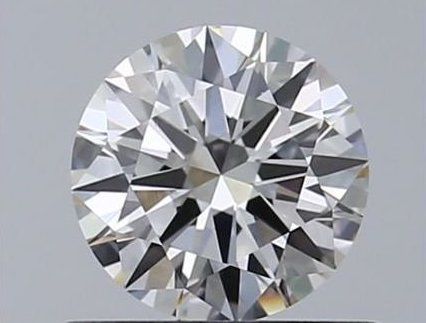Fancy Color Diamonds
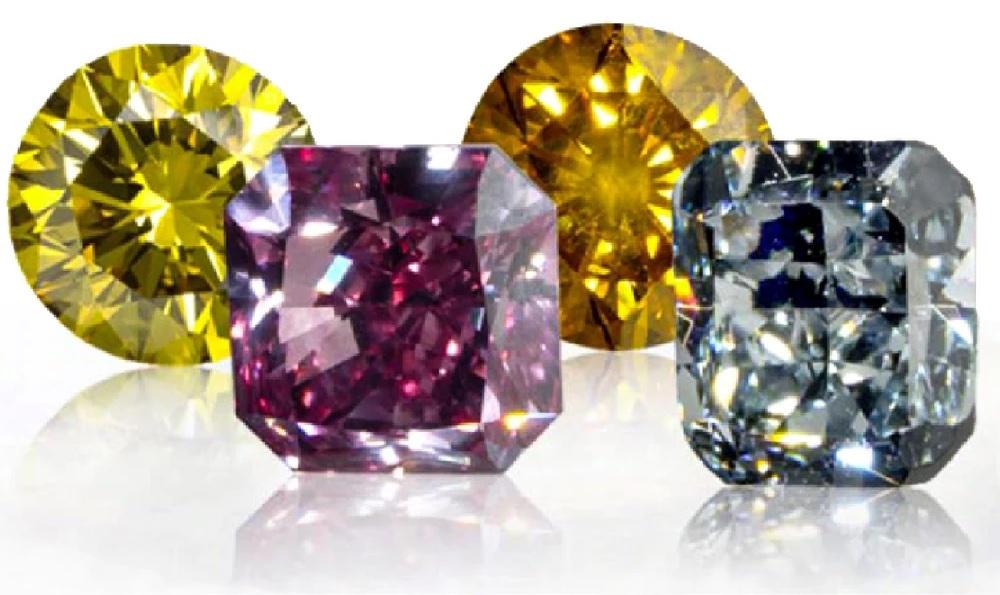
Naturally fancy colored diamonds are very rare and, as such, stunning to behold. Each diamond is truly unique, with its own distinctive shade and quality. Fancy-colored diamonds include red diamonds (the rarest color), blue diamonds, pink diamonds, yellow diamonds, orange diamonds, and black diamonds. Lab-grown fancy colored diamonds also exist, however they are far less valuable.
Like white diamonds, fancy colored diamonds are still graded on the 4 Cs - Cut, Color, Clarity, and Carat. However, fancy colored diamonds do not use the same D - Z color grading scale that white diamonds do. Fancy colored diamonds will receive a color grade of Fancy Light, Fancy, Fancy Intense, or Fancy Vivid. The more saturated a fancy diamond's color, the more expensive it will be.
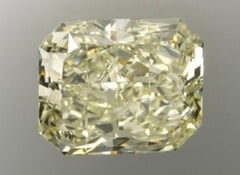 Fancy Light Yellow |  Fancy Yellow | 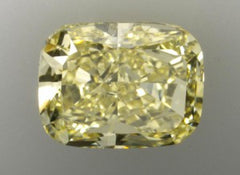 Fancy Intense Yellow | 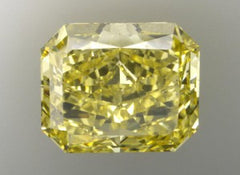 Fancy Vivid Yellow |
Fancy Yellow Diamonds
Yellow, or canary, diamonds, are a rare natural alternative to white diamonds. While white diamonds run on a color scale from D to Z, yellow diamonds have a much wider range (Z is considered light yellow). Some yellow diamonds are very white with a hint of yellow, while others have no traces of whiteness.
All fancy yellow diamonds display more color than the Z grade on the white diamond scale. Any yellow diamonds that show less color than the Z grade are considered Faint through to Light Yellow. K to M graded diamonds are Faint Yellow, N to R are Very Light Yellow, and S to Z are considered Light Yellow.
Natural color intensity strongly informs the value of a yellow diamond, but it is not the only factor. Fancy yellow diamonds are graded from the top view of the diamond, whereas white diamonds are graded from a facedown position. Yellow diamonds are graded according to the purity of their hue, tone, and saturation.
A yellow diamond’s cut is also very important to its overall value. Because the color is their defining characteristic, they are cut so as to maximize the natural hue. Generally, the deeper the pavilion, the more color reaches the eye. A radiant cut is particularly popular for yellow diamonds – but of course, as with white diamonds, the cut is also determined by the condition of the rough.
The yellow color in diamonds is organically caused by the presence of nitrogen. Some yellow diamonds contain not only yellow tones, but also secondary tones, including green, brown, and orange. These colors can also be present in combination, producing interesting and beautiful natural diamonds.
While white diamonds are enhanced by white metals such as platinum and palladium, yellow gold intensifies the color of yellow diamonds. Therefore, almost all yellow diamonds are set using a yellow gold head and prongs.
Even though they are the most common of fancy colored diamonds, they are still considered rare, although naturally pink and blue diamonds are even more so.
Fancy Pink Diamonds
Naturally fancy pink diamonds are extremely rare and, as such, very valuable. While white diamonds – the most common diamond color – run on a color scale from D to Z, pink diamonds are categorized differently. Pink diamonds are labeled either very light pink, light pink, fancy pink, intense pink, and vivid pink, with vivid pink being the rarest.
Every organic pink diamond is unique. This is due to both their rarity, and the specific pink hue that each individual diamond exhibits. Much of the allure of pink diamonds is due to the mystery surrounding what exactly causes their natural pink shade.
Scientists believe that very high temperatures cause an atomic-level lattice defect within the diamonds’ structures. This selectively absorbs light, which may be responsible for their pink color.
With pink diamonds, color is often considered the most important of the 4Cs. While white diamonds are classified carefully according to their clarity, this is less important for pink diamonds, in relation to their color. Natural color intensity strongly informs the value of pink diamonds, but it is not the only factor. Fancy pink diamonds are graded from the top view of the diamond, whereas white diamonds are graded from a facedown position.
A pink diamond’s cut is also very important to its overall value. Because the color is their defining characteristic, they are cut so as to maximize the natural hue. The greater the saturation, the more precious a fancy pink diamond tends to be. Diamonds that are naturally highly saturated with pink color are incredibly valuable, selling for millions of dollars per carat.
The Argyle Diamond Mine in Western Australia is the largest source of rare natural pink diamonds in the world. The mine produces over 90% of the world’s supply of pink diamonds, as well as many other colored diamonds. Unfortunately, the mine is set to close by the end of 2020 as extracting diamonds has become increasingly difficult.
Fancy Green Diamonds
Naturally fancy green diamonds are the second most rare color of diamond in the world, after red diamonds. A blend of blue and yellow light, the green tone in these fancy diamonds varies from blue-green to yellow-green. Every green diamond is unique, making them incredibly valuable and sought after.
The green color of these diamonds is produced with beta and gamma rays that infuse the diamond as it forms over many years. These rays tend to only affect the outer diamond; therefore, the green hue is only emitted from its surface. Over time, the color is likely to fade. This contributes to the rarity of fancy green diamonds.
Natural color intensity strongly informs the value of a green diamond, particularly because it tends to fade over time. Fancy green diamonds are graded from the top view of the diamond, whereas white diamonds are graded from a facedown position. Green diamonds are graded according to the intensity of their hue, tone, and saturation.
A green diamond’s cut is also very important to its value. Because the color is their defining characteristic, they are cut so as to maximize the natural hue. The greater the saturation, the more precious a fancy green diamond is likely to be. Diamonds that are naturally highly saturated with green color are incredibly valuable, selling for millions of dollars per carat.
Fancy Blue Diamonds
Naturally blue diamonds are incredibly rare and very valuable. While white diamonds run on a color scale from D to Z, there is similarly no one color for blue diamonds. Some are very light, others notably deep; some have secondary tones of green or gray. Blue diamonds are labeled very light blue, light blue, fancy blue, intense blue, and vivid blue.
Every organic blue diamond is unique in color. This is due to both their notable rarity, and the individually blue tone that each diamond exhibits. The blue hue of these naturally colored diamonds is due to the presence of a variety of elements. Those that result in a blue tint are boron, hydrogen and nitrogen. When boron is trapped in a diamond’s matrix, it causes the diamond to emit a blue tone.
Natural color intensity strongly informs the value of blue diamonds, but it is not the only factor. Fancy blue diamonds are graded from the top view of the diamond, whereas white diamonds are graded from a facedown position. Blue diamonds are graded according to the concentration of their hue, tone, and saturation.
A blue diamond’s cut is also very important to its overall value. Because color is their defining characteristic, they are cut so as to maximize the natural hue. The greater the saturation, the more precious a fancy blue diamond tends to be. Diamonds that are naturally highly saturated with blue color are incredibly valuable, selling for millions of dollars per carat.
Fancy Orange Diamonds
Natural orange diamonds are incredibly rare and beautiful. To be considered a truly fancy orange diamond, they need to contain very little to no traces of brown color. They tend to contain yellow and pink secondary tones, and each one is unique.
The Argyle diamond mine in Western Australia – the most significant source of fancy pink diamonds in the world – also produces many of the world’s fancy orange diamonds. Scientists believe the pink tones in orange diamonds are produced by an atomic-level lattice alteration within the diamonds’ structures, which selectively absorbs light. Yellow tones are produced by the presence of naturally occurring nitrogen within the diamonds.
Depending on the tone of the particular diamond, fancy orange diamonds can look stunning in either white metals such as platinum, or yellow gold. The yellow of traditional gold complements the presence of yellow tones, while a white metal will contrast for a distinctive effect.
Fancy orange diamonds are often categorized as fancy orange, fancy intense orange, fancy vivid orange, fancy deep orange, and fancy dark orange. Because they are so rare, each diamond is appraised by its individual merits and has its own unique color. To consider a fancy orange diamond, you really need to see the actual diamond’s imagery.
Fancy Black Diamonds

Dark and dramatic, black diamonds make a wonderful choice for engagement rings, wedding rings, earrings, and more. They are much more affordable than other fancy colored diamonds such as pink and blue diamonds. These opaque diamonds have no sparkle. Instead, they have a high luster. Because they are opaque, the GIA cannot assign them a clarity grade.
There are naturally occurring black diamonds as well as treated black diamonds. Because black diamonds are so rare, they are often treated to become black. Treated (also called enhanced) black diamonds are man-made by taking white diamonds that have too many inclusions to use for jewelry. The diamonds are then heated or irradiated to obtain a dark color. Color-treated black diamonds are actually an incredibly dark green color, but appear black in regular lighting. A GIA certification will specify if a diamond is natural or color-treated. At Ritani, we only use natural black diamonds in our jewelry.
Black diamonds are formed the same way colorless diamonds are formed: from pure carbon, intense heat and pressure under the earth’s surface. Fancy black diamonds receive their dark color from large amounts of mineral inclusions such as graphite, hematite, or pyrite. Because they are so heavily included, they must be cut, polished, and set with care in order to not damage the diamond.
Black diamonds can feature microscopic fractures as a result of being so heavily included. These fractures can make your diamond more vulnerable to cracking. It’s recommended that you do not use ultrasonic cleaners for black diamond jewelry, which can damage black diamonds.
